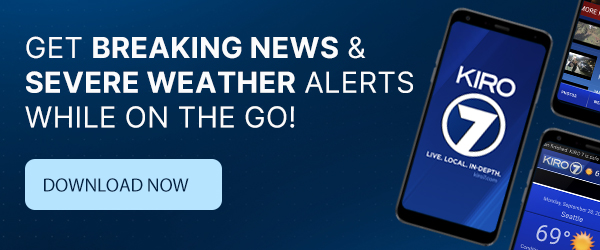Just before a 3.3 magnitude earthquake rattled Bremerton earlier this week , seismologists were celebrating.
John Vidale, state seismologist, University of Washington professor, and director of the Pacific Northwest Seismic Network, noted that his earthquake early warning app told him to expect to feel (intensity II) shaking for the quake. The warning system — known as ShakeAlert — has warned him of plenty of quakes, but most are either too weak or too far away for Vidale to actually experience firsthand.
It’s an important step forward for a system that could save thousands of lives when the “big one” finally hits.
The seismologist admittedly did not feel the quake, although others in Seattle did. He says it’s another example of the system actually working.
“It’s another earthquake where it worked correctly,” he said. “It’s promising.”
That might seem like small potatoes, but you might remember that it wasn’t long ago when the early warning system was sometimes slow to predict earthquakes. The system, a collaboration between the U.S. Geological Survey and public and private partners, is now years in the making and apparently making strides toward public use. Once finished, the goal is to warn the public of an earthquake before noticeable shaking begins by detecting an initial, fast-moving jolt from a quake.
Though the system may only provide a few seconds of warning, the idea is to give people enough time to take cover and enough time to shut down critical utilities and infrastructure. Now in “Version 1.2,” the system was recently integrated across the entire West Coast; early adopters are now developing pilot implementations.
Vidale says they receive earthquake warnings about once per day, typically somewhere on the West Coast, and usually near Los Angles, Calif.
But there are still hurdles beyond simply setting up a life-saving system that detects earthquakes. Funding, of course, is still an issue. Vidale says the program needs some $20 million to $30 million to building the system out to perform as designed — not to mention the $16 million to run it every year. Luckily, as of now, it appears at least some funding from the government is headed their way.
The other issue is telecommunications. A system of this size also needs the networks it relies on to handle the load.
“There is no way to send [a warning] to everyone’s cellphone at the moment,” Vidale says. “If we tried to send out ten million messages it wouldn’t be nearly fast enough to us.”
They would like to be able to start sending alerts to the public in the next few years, but until additional advancements can be made, the early warning app will just be alerting the people who are designing it.
In the meantime, the majority of us will remain blissfully unaware of the shaking under us until it’s already happening. Thankfully, Vidale says a swarm of quakes like what occurred under Bremerton only increases the risk of our “current quake hazard” by a tiny amount.
“None of us are leaving town,” he added.
Maybe it’s time we all start following our West Coast seismologists on Twitter and move when they move …
“Of course, if there were an earthquake coming, we’d all fly into town, not out of town. Because, you know, we actually would like to be there if there was an earthquake,” Vidale said.
… Maybe not.
Article Link: http://mynorthwest.com/623836/bremerton-earthquake-promising-test-for-new-warning-system/
Cox Media Group







